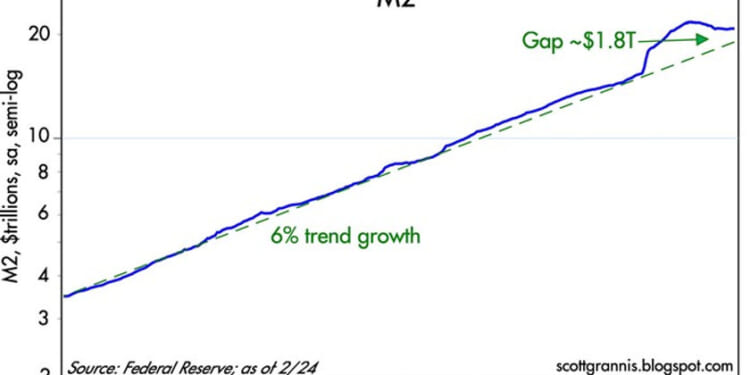
The first article documenting the disastrous rise in prices Americans are facing was admittedly a little bit tongue in cheek, but telling, nonetheless.
The 99 Cents Stores have been a California institution for over 40-years, offering closeout merchandise for 99 cents (or less), though that crept up with inflation. But now the regional chain has been forced to close all 371 of its stores and lay off 14,000 employees.
NPR reported dollar-store chains overall are struggling, many of them blaming their downfall on factors like inflation and theft. Last month, Dollar Tree said it planned to shut down about 12% of its Family Dollar locations over the next three years, and 30 of its Dollar Tree stores. Dollar General appears to be the outlier; the chain plans to open hundreds of stores this year and said it would yank self-checkouts from stores most affected by shoplifting.
Previously, the 99 Cents Stores had been beloved for the promise that most items cost under a dollar. But in recent years, fans have bemoaned its pricing policy changes that, despite the trademarked name, had driven up prices “to keep pace with rising operating costs.”
As Rush used to say, for those of you in Rio Linda “rising operating costs” means inflation.
The second article on inflation was more substantive and should really get the attention of economic conservatives and Republicans in Congress.
Steve has long been an advocate of tracking commodity prices as an inflation indicator, last week he showed that commodity prices are soaring, and he reminded readers that this is a lead indicator of higher consumer inflation. (The commodity index is now up 15% since the start of the year.)
Steve wrote that he got some pushback from some very smart guys, including investment ace Scott Grannis. Steve reported that Mr. Grannis is predicting moderate inflation over the rest of the year due to slow monetary growth. This is a more traditional monetarist view of inflation, and it’s worth paying attention to.
Mr. Grannis noted that M2 (the Fed’s favored definition of the total supply of money in the economy) continues to shrink as a share of the economy. After the explosive growth of M2 in 2020 and 2021, M2 has been slightly negative, and it has returned to its 6% trend growth.
Now, here’s where it gets interesting.

As the chart above shows, M2 growth has been a reliable predictor of inflation with about a one-year lag, and if that relationship holds up, inflation will start to fall.
That’s a big IF, wrote Steve given the continued torrent of government spending expected this year and next, he still thinks it’s going to be hard to stop the rise in prices.

Given that the expectation that government spending is going to moderate is the underlying supposition behind the prediction that inflation will start to fall we have to go with Steve Moore on this one. We certainly see no evidence that Democrats and Joe Biden plan to stop demanding more spending and given their performance in the two “minibus” negotiations we see no indication that Republicans are going to hold the line.












